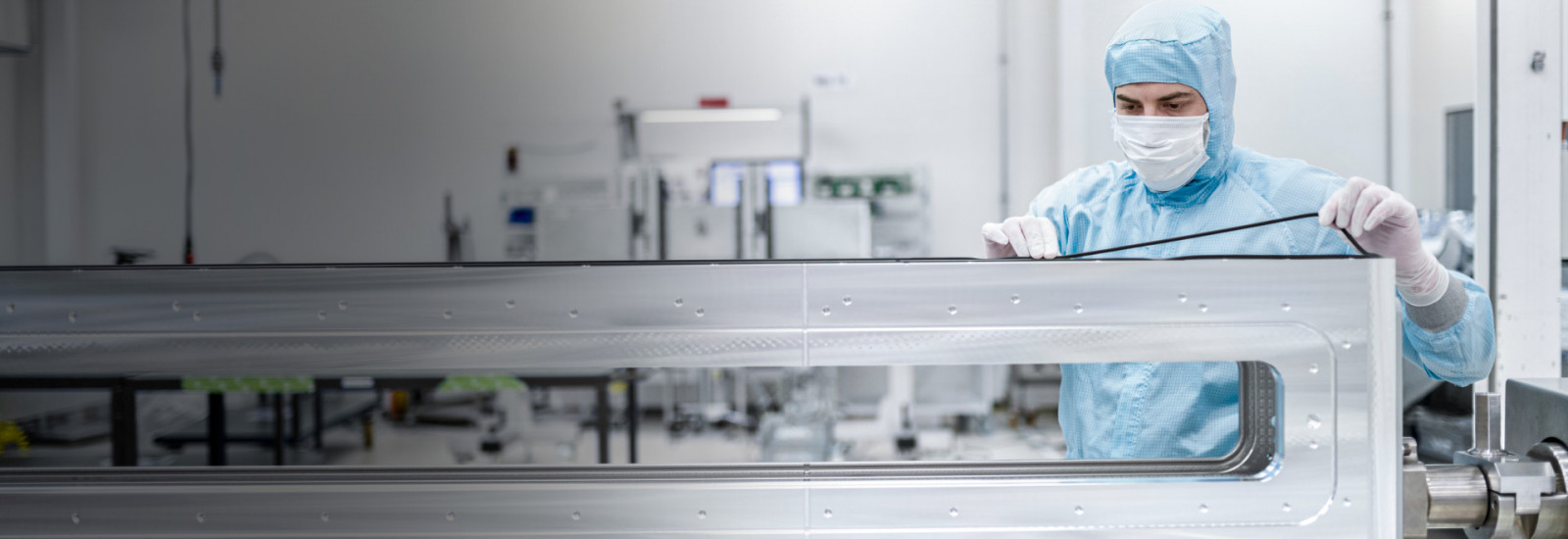The decisive factor for vacuum valves used in particle-sensitive processes is that the valve plate and valve seat seal without metal-to-metal contact. This means that the two metal surfaces of the plate and the seat are separated by the elastomer seal when closed (all-metal valves without elastomer seal are a different case here). The seal as well as the contact pressure of the valve plate must be designed in such a way that the seal provides optimum sealing for the process conditions and at the same time the compression is not too high. If the compression is too high, there is a risk that the seal will be stressed beyond its specific material properties, causing structural stress in the seal, which can lead to wear or even damage. Several factors are important when designing a sealing system in a vacuum: process conditions, seal dimensions and geometry, planned sealing cycles, and contact with process gases or process-related deposits, if applicable.
When using O-ring seals under vacuum conditions, additional mechanical conditions must be taken into account. For example, the usually prevailing differential pressure creates tensile forces on the seal, which can cause the O-ring to be pulled out in the classic design of O-ring grooves. Slight "sticking" of the seal to the valve seat can also cause it to be pulled out. This "sticking" is caused by certain process conditions in a vacuum that promote cross-linking between the metal and elastomer contact surfaces.
O-ring grooves on vacuum valves are therefore designed in a special way: They prevent the O-ring from being pulled out by negative pressure flows at differential pressure or from sticking to the valve seat.
Another element in the design of the O-ring groove is the avoidance of "virtual leaks" – that is, areas in the groove that are not completely filled by the O-ring when the valve is open, as well as when it is closed, but are closed to the environment. These "dynamic" spaces must be designed in such a way that they provide the necessary space for the elastic dynamics of the O-ring without having a negative effect on process performance. For this reason, these areas are always appropriately vented in VAT valves so that, for example, pressure changes also act in these so-called dead spaces and thus do not unintentionally lift an O-ring out of the groove. In the case of aggressive processes, the aim is to ensure that the O-ring is not directly exposed to the process; here, it is necessary to find a functioning balance between vacuum-physical necessities and material-specific protective mechanisms.
When O-rings are used for sealing, the preload, such as pressing pressure through the sealing groove, must not preload the O-ring to such an extent that a mechanical overload occurs during the dynamic, repeated sealing function. VAT ensures this by means of an extensive test regime during development as well as the experience gained from thousands of valve inserts in a wide range of application conditions. Based on this knowledge, VAT has developed calculation models that allow accurate specification of these parameters.
Also decisive for the durability of the O-ring seal over long functional intervals is the material selection. Depending on process conditions such as vacuum level, temperature and process gases used, the seal ages in addition to undergoing mechanical stress.
In vacuum, therefore, different materials are used, each optimized for specific parameters, such as temperature. In individual cases, this allows seals to be optimized for a process during maintenance after commissioning.
In addition to O-ring seals, elastomer seals that are bonded directly to the valve plate by vulcanization or other bonding processes play an important role. These offer the special advantage that they do not require a sealing groove, thus eliminating groove-related challenges and disadvantages. Furthermore, the design of the seal geometry can be optimized more closely to the sealing properties as well as the damping behavior. The disadvantage of elastomer seals compared to an O-ring solution is the need to always replace the valve plate as the seal carrier along with the seal. However, this seal class offers significantly better performance characteristics for demanding requirements in terms of sealing behavior, damping properties, particle generation and long-term stability.
